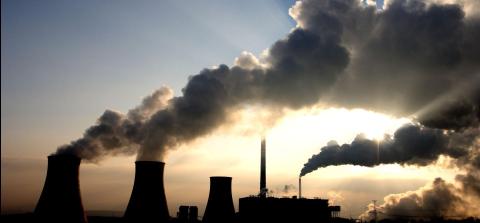IEEFA Update: Beijing May Intercede to Save Adani’s Australian Coal Project
Struggling to secure financing for is Carmichael mine-and-coal project, Adani is now exploring the possibility of sponsorship by Chinese state-owned enterprises.
According to various sources, the state-owned China Machinery Engineering Corporation (CMEC) appears to be the leading contender for engineering, procurement and construction contracts for key parts of the proposed Carmichael mine and/or rail projects.
We published some of the details in a research brief we put out this week.
CMEC sometimes takes minority equity stakes in the projects it is contracted to engineer, and in this case could be a desperately needed boost for Adani, which has struggled to find financing.
Importantly, CMEC can bring access to the Export Import Bank of China and the China Construction Bank, both also state-owned enterprises, or SOEs.
Chinese SOEs won’t become involved if there is no benefit to them, a reality that raises the question of where Carmichael coal would actually be exported to.
Adani has always stated that Carmichael is part of a vertically integrated “pit-to-plug” strategy with Adani Power, the intended coal off-taker in India. But Adani Power Ltd has stated that its import coal-fired power station at Mundra is no longer viable, and Tata Power’s Mundra power plant is in the same situation.
Furthermore, Adani has express an interest in selling a majority stake in its Mundra plant to the state government of Gujarat for a single rupee. If this were to occur, the Gujarat government would likely to seek coal sources that are cheaper than what Carmichael would produce.
It also seems unlikely that Carmichael coal would go to China. Although thermal coal imports into China have risen recently (after a 40 percent drop in the preceding two years), the nation os reorganizing its electricity system to be less reliant on coal as it battles air pollution issues and continues to swear by its commitment to the Paris climate-change agreement.
WHERE, THEN, DOES CARMICHAEL COAL GO if the Chinese take a stake? Perhaps to serve China’s “Belt and Road Initiative,” a US$1 trillion build-out of infrastructure projects, including coal-fired power plants, across ancient land and sea trade routes.
At the recent Chinese Party Conference, the Belt and Road Initiative was enshrined in the Party constitution, increasing the focus and pressure for it to succeed. CMEC itself has interests in coal-fired power projects within the Belt and Road Initiative—with Pakistan as a priority.
If the involvement of Chinese SOEs in the Carmichael project plays out, the project starts to look very different from the one that has been long advertised by Adani, including a promise to “light up 100 million Indian homes.” So this turn of events presents reputational risk for Adani.
It also presents enormous headline risk for the Chinese government, which has stepped into a global leadership role in driving implementation of the Paris climate accord going into the United Nations Bonn conference in November.
China is investing heavily, too, in the global energy market transformation, as seen in its phenomenal rate of new solar energy capacity installations—as much as 50 gigawatts this year alone. Any contradictory move, especially in support of what would be the largest new coal basin in world, would undermine Beijing’s credibility.
The Northern Australia Infrastructure Facility (NAIF) will soon a make a decision on whether to provide a A$1 billion subsidy to the project. The NAIF loan would be in addition to a nA$600 million royalty holiday courtesy of the state government and A$31 million of funding from local governments for an airstrip.
If it turns out that Australian taxpayers and ratepayers are also effectively subsidizing Chinese state-owned enterprises—on top of what the subsidies they are giving to an Indian conglomerate—there are likely to be further eyebrows raised.
Simon Nicholas is an IEEFA energy finance analyst. A version of this column first appeared this week in RenewEconomy.
RELATED POSTS:
IEEFA Australia: Adani Is Said to Seek Financing From a Chinese State-Owned Enterprise
IEEFA Asia: China’s Utility Sector Is in Change Mode
IEEFA Update: Are Investors in Asian Coal Starting to Think Twice?
















